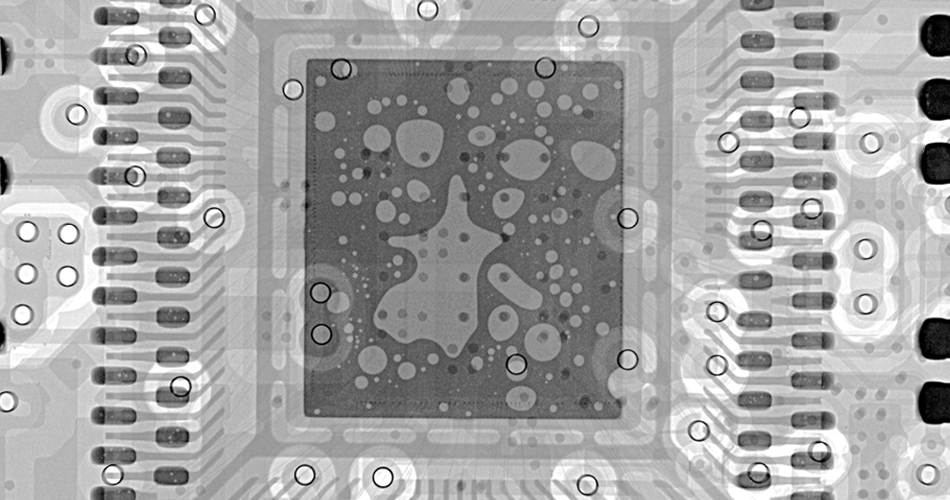- English
- Español
- Português
- русский
- Français
- 日本語
- Deutsch
- tiếng Việt
- Italiano
- Nederlands
- ภาษาไทย
- Polski
- 한국어
- Svenska
- magyar
- Malay
- বাংলা ভাষার
- Dansk
- Suomi
- हिन्दी
- Pilipino
- Türkçe
- Gaeilge
- العربية
- Indonesia
- Norsk
- تمل
- český
- ελληνικά
- український
- Javanese
- فارسی
- தமிழ்
- తెలుగు
- नेपाली
- Burmese
- български
- ລາວ
- Latine
- Қазақша
- Euskal
- Azərbaycan
- Slovenský jazyk
- Македонски
- Lietuvos
- Eesti Keel
- Română
- Slovenski
- मराठी
- Srpski језик
X-ray inspection and solder joint analysis in PCBA assembly
2024-04-18
During the PCBA assembly process, X-ray inspection and solder joint analysis are two important quality control tools that help ensure the quality and reliability of solder joints. Here are the details on both:

1. X-ray Detection:
X-ray inspection is a non-destructive inspection method that uses X-rays to penetrate electronic components and solder joints to visualize internal structures and detect potential problems. In PCBA assembly, X-ray inspection is usually used for the following aspects:
BGA (Ball Grid Array) Inspection: The solder ball connections in BGA packages often cannot be directly visualized. X-ray inspection can be used to verify the position, shape and quality of solder balls to ensure reliable connections.
QFN (Quad Flat No-Lead) package inspection: QFN packages usually require X-ray inspection to check the integrity and connection of the pads.
Through-hole solder joint inspection: For multi-layer PCBs, through-hole connections often require X-ray inspection to ensure the integrity and quality of the connection.
Component positioning and orientation: X-ray inspection can be used to verify the exact position and orientation of components to ensure they are installed correctly on the PCB.
Welding quality analysis: X-ray inspection can also be used to analyze the quality of the welding area, such as solder distribution, welding defects and weak welding, etc.
The advantages of X-ray inspection include non-destructiveness, high resolution, ability to detect hidden problems and suitability for high-volume PCBA production. It is an important tool for ensuring high-quality solder joints.
2. Solder Joint Analysis:
Solder joint analysis is the process of evaluating solder quality and reliability through visual inspection and testing techniques during PCBA manufacture. Here are some key aspects in solder joint analysis:
Visual inspection: Use high-resolution cameras and microscopes to inspect the appearance of solder joints to identify soldering defects, weak soldering, uneven solder distribution, etc.
X-ray inspection: X-ray inspection has been mentioned, which can be used to detect the internal structure and connections of solder joints, especially for packages such as BGA and QFN.
Electrical testing: Use electrical testing methods, such as continuity testing and resistance testing, to verify the electrical performance of solder joints.
Thermal analysis: Thermal analysis methods, such as infrared thermography, are used to detect the temperature distribution of solder joints and components to ensure there are no thermal problems.
Fracture Testing: Fracture testing is performed to evaluate the strength and durability of solder joints, which is especially important for applications that need to withstand mechanical stress.
Solder joint analysis helps identify and resolve soldering issues early to ensure PCBA reliability and performance.
Taken together, X-ray inspection and solder joint analysis are important tools to ensure the quality and reliability of PCBA solder joints. They can help identify and resolve potential problems, reduce the rate of defective products, and improve product quality and performance. Using these tools at the appropriate stages of the production process can greatly improve manufacturing reliability.
-
Delivery Service






-
Payment Options









